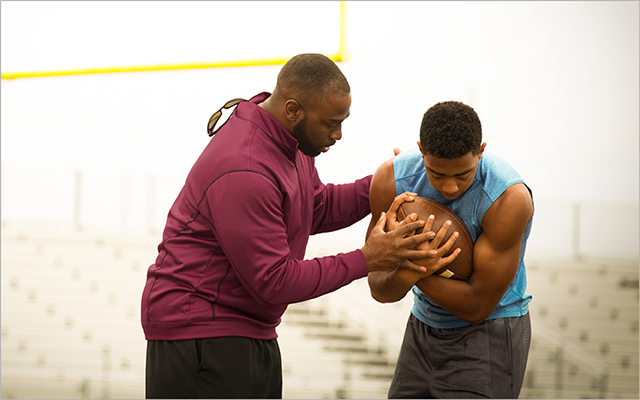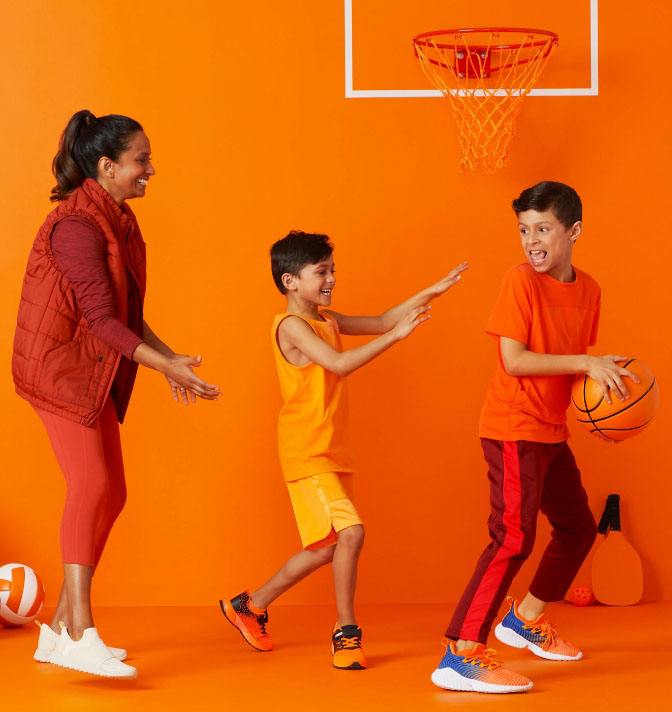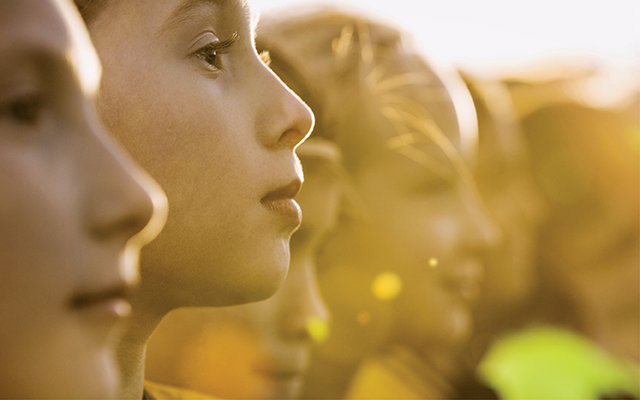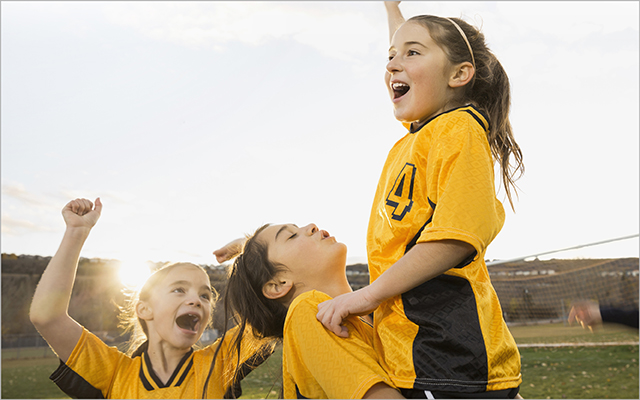“Youth athletics is becoming an industry,” says sports psychologist Dan Saferstein, PhD, author of Win or Lose: A Guide to Sports Parenting.
“There are parents spending over $50,000 a year on coaching and training for their kids,” he explains. Name your sport, and across the country you’ll find young athletes rising for predawn practices, staying after school for extra coaching, and spending weekends in elite facilities, hoping for an edge in the fierce competition for spots on club teams, scholarships, or Olympic glory.
“It can be great to be into sports,” Saferstein admits. “And, of course, some kids are truly elite.” Like the gifted math whiz or music virtuoso, the gifted youth athlete thrives in what others perceive as an overly pressurized situation; such children discover a chance to belong, express themselves, and excel.
The situation can easily turn problematic, however. “Parents call me when their kids aren’t performing at their potential, when they’re getting stomachaches, when they want to quit,” he notes.
It’s possible for parents — together with coaches and teachers — to nurture young athletes’ desire to achieve while helping them maintain a sense of balance, Saferstein adds. Fundamentally, it’s about perspective: helping child athletes appreciate and enjoy sports without letting them become overwhelmed.
Consider these strategies.
Manage Expectations
“So many parents — myself included, for a few years — get this notion that their kids have talents that should be nurtured to the highest degree,” says Ruth Marsh, who raised a former Washington youth-gymnastics champion. “In the moment, it all feels important; maybe your kid will miss out if she or he doesn’t get all the training.”
Despite all the praise that skilled children receive, only a fraction of talented kids ever make the Olympic team or play in the pros, regardless of training and commitment. Of the nearly 8 million U.S. students who participate in high school athletics, a mere 6 percent eventually compete as National Collegiate Athletic Association (NCAA) athletes.
An even tinier percentage move up to the professional or Olympic level. Less than 1 percent of high school athletes receive athletic scholarships, and only 0.03 to 0.05 percent go on to play professionally, according to the NCAA.
“At some point, most kids have to re-sketch their dreams,” says Saferstein. For some, that might mean going to a Division III college instead of a DI school.
For others, it might mean accepting that high school may be the end of the line for that sport and instead embracing the idea of carrying the lessons they learned with them through life: They can continue to strength train, for example, and they will certainly use their skills in teamwork and collaboration.
“In different stages of your life,” he says, “you have to make peace with what’s gone your way and what hasn’t. You have to learn to be disappointed without being disappointed in yourself.”
Avoid Specialization
Many kids these days focus on playing just one sport, often year-round, in hopes of making an elite team. In reality, though, this is less likely to lead to athletic stardom and more likely to set a child up for injury.
The “increased emphasis on sports specialization has led to an increase in overuse injuries, overtraining, and burnout,” according to a 2016 report from the American Academy of Pediatrics. An estimated 50 percent of athletic injuries among youth ages 18 and younger are related to overtraining.
A 2017 study published in the American Journal of Sports Medicine found that among the 1,500 boys and girls surveyed, those who had higher levels of specialization were 50 percent more likely to be injured.
Experts agree that playing multiple sports is good for the body and mind. Variation in physical stressors builds general fitness for health and longevity, while focusing on one activity can lead to overtraining and repetitive injuries with long-lasting repercussions. Mixing things up with more casual pursuits can also help relieve the pressure to be the best at just one thing.
And avoiding specialization doesn’t have to hinder progress in a favorite activity; in fact, many pro athletes come from a multisport background.
Cross-training and active recovery, especially during the off-season, are key for adult athletes — and kids can benefit from these practices as well. If a child loves basketball but also enjoys Rollerblading, it’s a good idea to mix in some wheel time for the fun of it.
Change Your Mindset
To some, sport is the ultimate zero-sum activity: One player wins only if another loses. For athletic kids, who can be borderline obsessive about how they stack up against others, the winner-or-loser definition of success can be addictive. (The first thing my son Dylan tells me after school is how he fared in his pickup basketball game at recess.) So some amount of comparison is unavoidable.
That’s why it’s essential to instill and model a mastery mindset early. Striving for mastery instead of victory is a form of intrinsic motivation, Mary Uran, cofounder of Girls on the Run Twin Cities, explains. Inspiration arises from the activity itself rather than from a desire to beat other people. As the old saying goes, it doesn’t matter whether you win or lose; it’s how you play the game. “The focus is on setting personal goals and then achieving them, not measuring yourself against others,” she says. “Your main competition is against yourself.”
It’s love of the game rather than love of conquest.
Parents can help encourage kids to take this broader view of success by emphasizing personal victories. For some athletes, a one-mile run is a major accomplishment and can be acknowledged as such, regardless of how the child places in the race. For others, completing a sub-19-minute 5K is an attainable goal — and something parents can support and applaud.
After a game, instead of asking your child, “Did you win?” ask her if she had fun, or if she was happy with how she played. You can also foster a mastery mindset in your child by calling attention to rebounds, aggressive play on defense, leadership, hustle, and improvement.
Lead By Example
In many martial-arts traditions, an advanced student often serves as senpai — a mentor — to a newer one during class. Although this takes time away from senior students’ workouts, it’s considered an essential part of their learning. On many sports teams, captains and assistant captains also serve as mentors.
Parents and coaches alike can encourage their more-skilled athletes to adopt these types of big-brother and big-sister roles, supporting younger kids and taking less-experienced teammates under their wings.
Often this checks the ego of the better athletes and helps them look outside themselves, which is essential in team sports and in life.
“We had this really fast girl in the Girls on the Run program once,” Uran recalls. “And she ignored all our lessons about being noncompetitive. One day she fell during a run and scraped her leg, and another girl stopped her workout to help her. She offered to walk a lap with her.”
It was a small gesture, but it changed the girl, says Uran. “She saw that this other girl cared about her, and not just because she was fast, but because she was a fellow runner.”
After that, Uran notes, “she still ran ahead of everyone,” but she began encouraging others and running alongside the slower kids after her own workout was done.
“She saw what being on a team was really all about.”
This originally appeared in “Playing for the Future” in the September 2018 print issue of Experience Life.





This Post Has 0 Comments